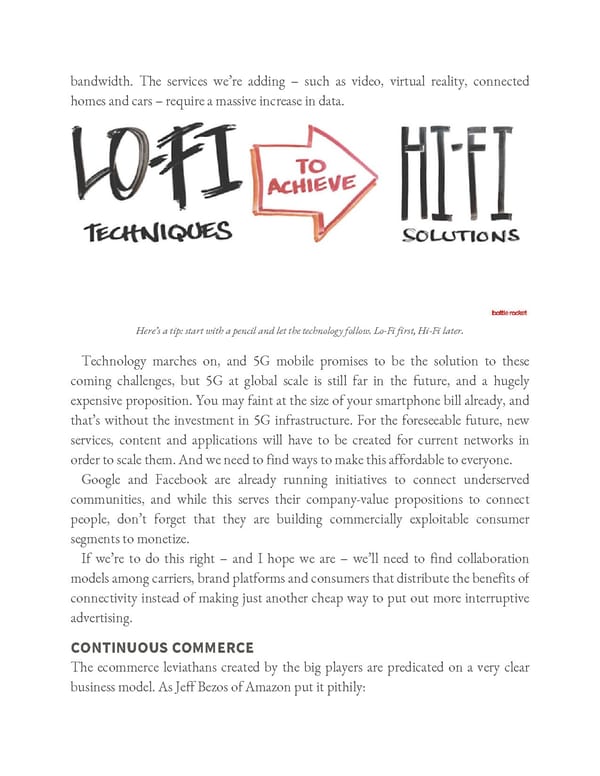bandwidth. The services we’re adding – such as video, virtual reality, connected homes and cars – require a massive increase in data. Here’s a tip: start with a pencil and let the technology follow. Lo-Fi first, Hi-Fi later. Technology marches on, and 5G mobile promises to be the solution to these coming challenges, but 5G at global scale is still far in the future, and a hugely expensive proposition. You may faint at the size of your smartphone bill already, and that’s without the investment in 5G infrastructure. For the foreseeable future, new services, content and applications will have to be created for current networks in order to scale them. And we need to find ways to make this affordable to everyone. Google and Facebook are already running initiatives to connect underserved communities, and while this serves their company-value propositions to connect people, don’t forget that they are building commercially exploitable consumer segments to monetize. If we’re to do this right – and I hope we are – we’ll need to find collaboration models among carriers, brand platforms and consumers that distribute the benefits of connectivity instead of making just another cheap way to put out more interruptive advertising. CONTINUOUS COMMERCE The ecommerce leviathans created by the big players are predicated on a very clear business model. As Jeff Bezos of Amazon put it pithily:
 Ogilvy on Advertising in the Digital Age Page 305 Page 307
Ogilvy on Advertising in the Digital Age Page 305 Page 307